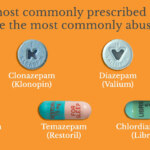A startling report from CDC:
US overdose deaths fell 27% in 2024 in largest one-year decline ever
In real numbers, that translates to an estimated 80,000 people who died from overdose in 2024, as opposed to 110,000 in 2023.
It’s a tremendous drop. Apparently the previous largest single year decline was a measly 4%, back in 2018. Only Nevada and South Dakota were exceptions. Both experienced a slight increase.
A few highlights:
- The change represents 70-plus fewer fatalities on each day in 2024.
- There have been corresponding (if smaller) decreases in nonfatal overdoses as well — more welcome news.
However, the death toll is still higher than before the COViD pandemic began, and overdose remains the leading cause of death for Americans between the ages of 18-44.
Assuming the new report is accurate– I’m sure some experts will have questions, given the changes at CDC– what could account for such a significant decline in the course of a single year?
Most cite the usual suspects. In no particular order:
- Widespread distribution of naloxone, mostly free, and available in areas where it’s most needed.
- Much greater access to treatment resources, including for people without funds (through Medicaid expansion, funded programs, reduced restrictions on MAT, etc.)
- Changing patterns of drug use on the part of the users themselves, and
- Positive impact from new programs funded by opioid settlement money.
On a less cheerful note: “The number of at-risk Americans is shrinking, after waves of deaths in older adults and a shift in teens and younger adults away from the drugs that cause most deaths.”
I interpret that as a winnowing of potential victims in the adult population, mostly through fatalities, along with greater awareness of the risks of substance use among younger people.
I’d be hard pressed to rank the above in terms of relative impact on the current decline. I imagine that would vary by region– differences between trends in New York or California versus West Virginia or Louisiana. All the same factors would be present, but to different degree.
One thing I couldn’t help noticing: The lack of references to the effectiveness of interdiction and law-enforcement. We know all those seizures we read about in the media must be having some positive impact on the death toll, in view of the effort and resources involved, but maybe it’s too difficult to measure with any accuracy.
The article does note that “Donald Trump’s administration views opioids as largely a law enforcement issue and as a reason to step up border security. That worries many public health leaders and advocates.” Would it mean a corresponding reduction in funding for treatment and prevention efforts?
It certainly has in past epidemics. Hope this isn’t a repeat performance.
We’ve all seen declines before, only to watch as momentum shifted in the opposite direction. Let’s hope this time is different.
We’ll be watching.













